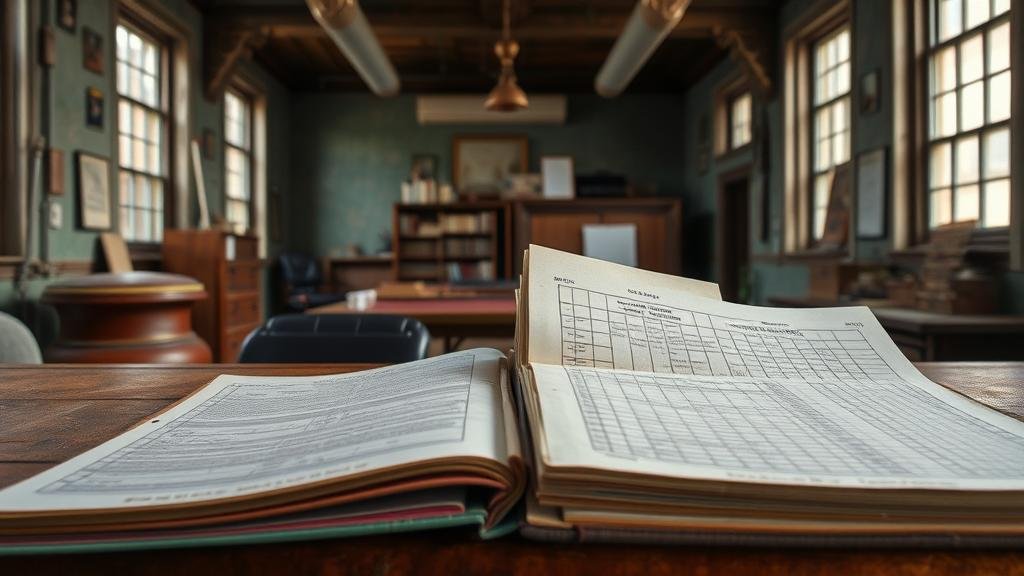Locating Forgotten Bills in Dusty Ledgers Found in Abandoned Offices
Locating Forgotten Bills in Dusty Ledgers Found in Abandoned Offices
In the realm of financial and historical research, the excavation of forgotten bills contained within dusty ledgers in abandoned offices represents a fascinating intersection of accounting, historical insight, and data recovery. These ledgers, often neglected over decades, can unveil a wealth of information about past transactions, business practices, and market trends. This article aims to provide an exhaustive guide on how to locate and interpret these forgotten bills, offering insights into methodologies, challenges, and the significance of such discoveries.
The Importance of Dusty Ledgers
Ledgers serve as a crucial repository for financial transactions that detail the activities of businesses across time periods. Forgotten bills within them may offer insights into various aspects, including:
- Historical Context: Understanding economic conditions of a particular era.
- Business Practices: Gaining insights into standard practices and unusual transactions.
- Legal Implications: Identifying potential claims or debts that may still be relevant.
For example, the discovery of ledgers from a defunct textile factory may reveal payment structures during the early 20th century, shedding light on labor practices and material costs prevalent at the time.
Methodologies for Locating Bills
The process of locating forgotten bills in dusty ledgers is systematic and requires careful planning.
1. Preparation and Organization
Before embarking on a physical search, it is critical to prepare by organizing relevant information:
- Identifying the Location: Determine specific abandoned offices known for holding valuable ledgers, often in urban environments with a rich history.
- Legal Considerations: Ensure permission to access these locations, as they might be private property.
- Gathering Tools: Bring necessary tools such as gloves, archival boxes for transport, and digital recording devices for documentation.
2. Conducting the Search
The act of searching should encompass:
- Visual Scan: A thorough examination of surfaces and storage areas where ledgers are likely to be found.
- Dust Management: Use masks and protective coverings to mitigate risks associated with dust inhalation.
- Systematic Review: Sequentially review each ledger, noting any entries that stand out or require further analysis.
Analyzing the Findings
Once the relevant bills are located, detailed analysis is essential for drawing useful insights:
- Data Extraction: Use software for data entry and organization, where automated technologies like Optical Character Recognition (OCR) can enhance efficiency.
- Contextual Understanding: Investigate each bill in the context of its time period, including market conditions and economic governance to assess significance.
- Corroboration: Validate findings against other historical documents to construct a more comprehensive picture.
Case Studies: Successful Recoveries
Numerous instances highlight the value of locating forgotten bills in dusty ledgers:
- The Revolution Brewery: During the redevelopment of a former brewery in the Midwest, investors uncovered original purchase invoices from the 1800s that exposed trade routes and supplier relationships long forgotten.
- The Architectural Firm: An abandoned office belonging to a defunct architecture firm yielded sketches and bills that chronicled the construction practices of notable buildings. This data not only preserved history but also provided potential leads for restoration projects.
Challenges in the Process
While the treasure trove of information within these ledgers is significant, the process comes with challenges, including:
- Physical Condition: Ledgers may be fragile, with pages ripped or bound poorly.
- Legibility Issues: Handwritten entries may be challenging to decipher due to various handwriting styles and ink deterioration.
- Legal Risks: The retrieval of information from private spaces can sometimes lead to legal issues.
Actionable Takeaways
Engaging in the recovery of forgotten bills from dusty ledgers can yield rich insights. Here are some actionable strategies:
- Network with Historians: Establish connections with historians and archivists who can provide guidance on best practices.
- Use Technology: Leverage scanning technology and databases for documentation and analysis to enhance efficiency.
- Document Findings: Keep meticulous records of your findings, including photographs of original bills and ledgers.
In summary, the quest for forgotten bills within dusty ledgers not only helps recover valuable financial data but also contributes to preserving business history. With the right tools, methodologies, and perspectives, researchers and historians can glean often-overlooked insights that enrich our understanding of the economic landscape of the past.



